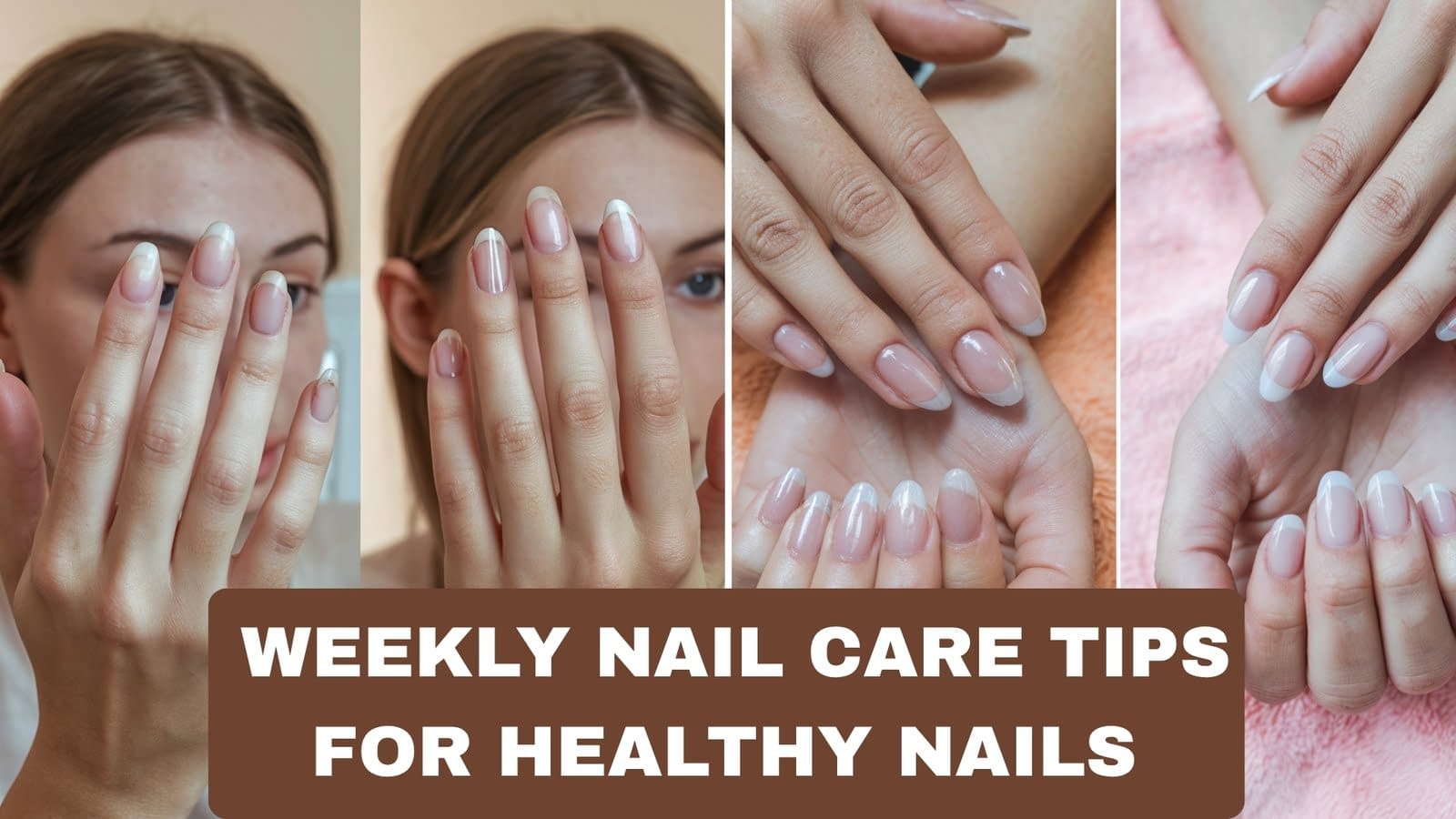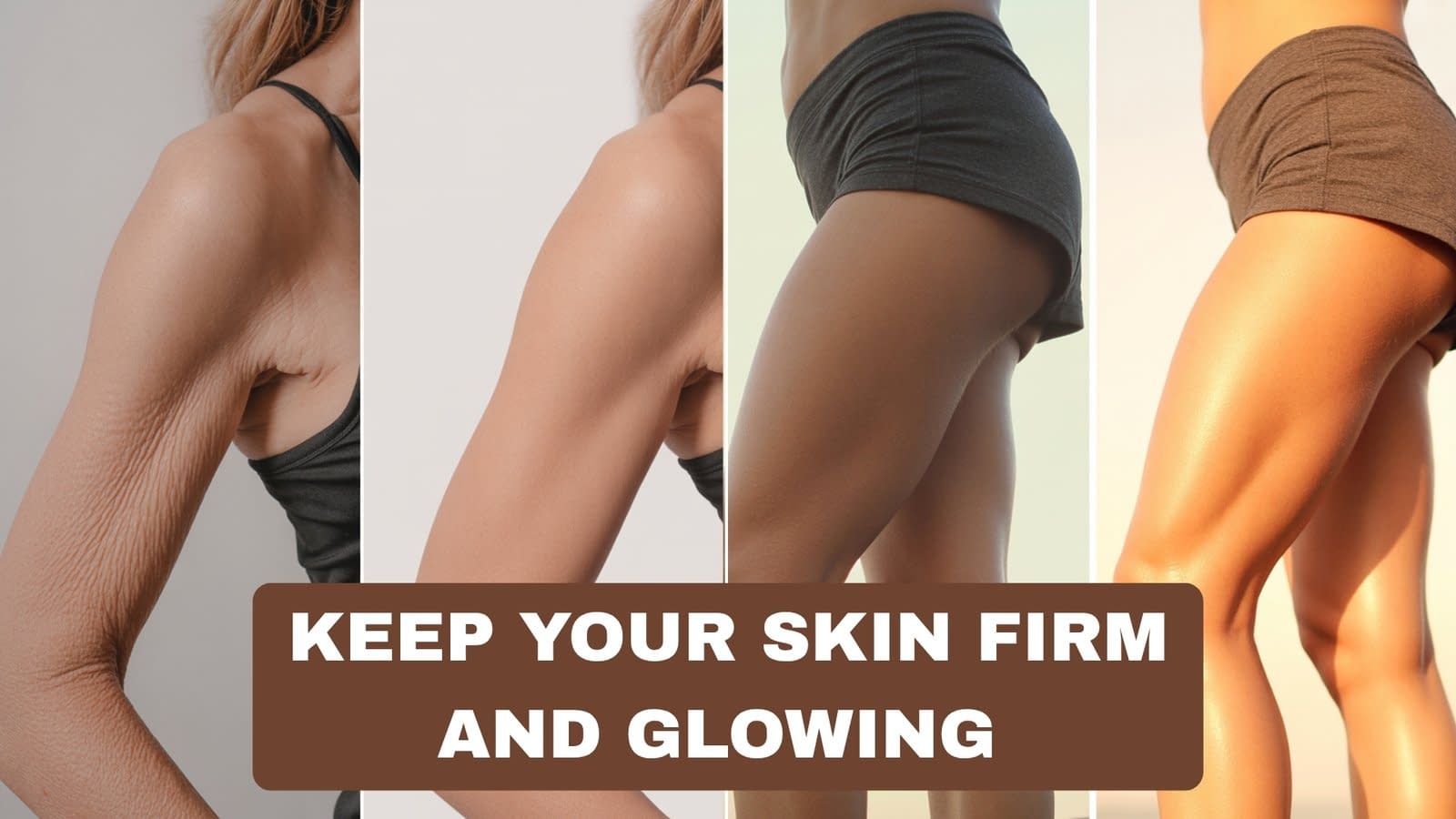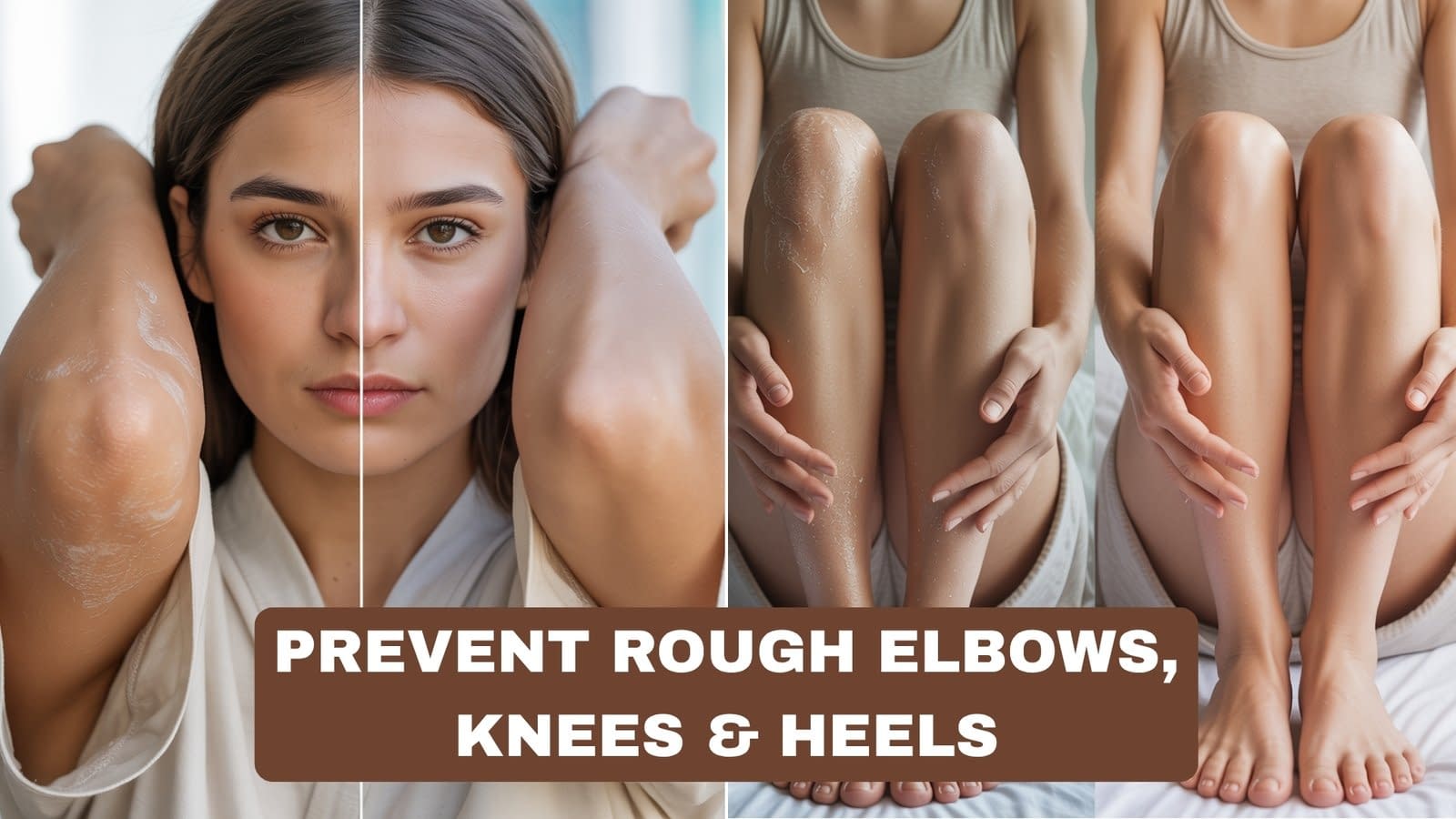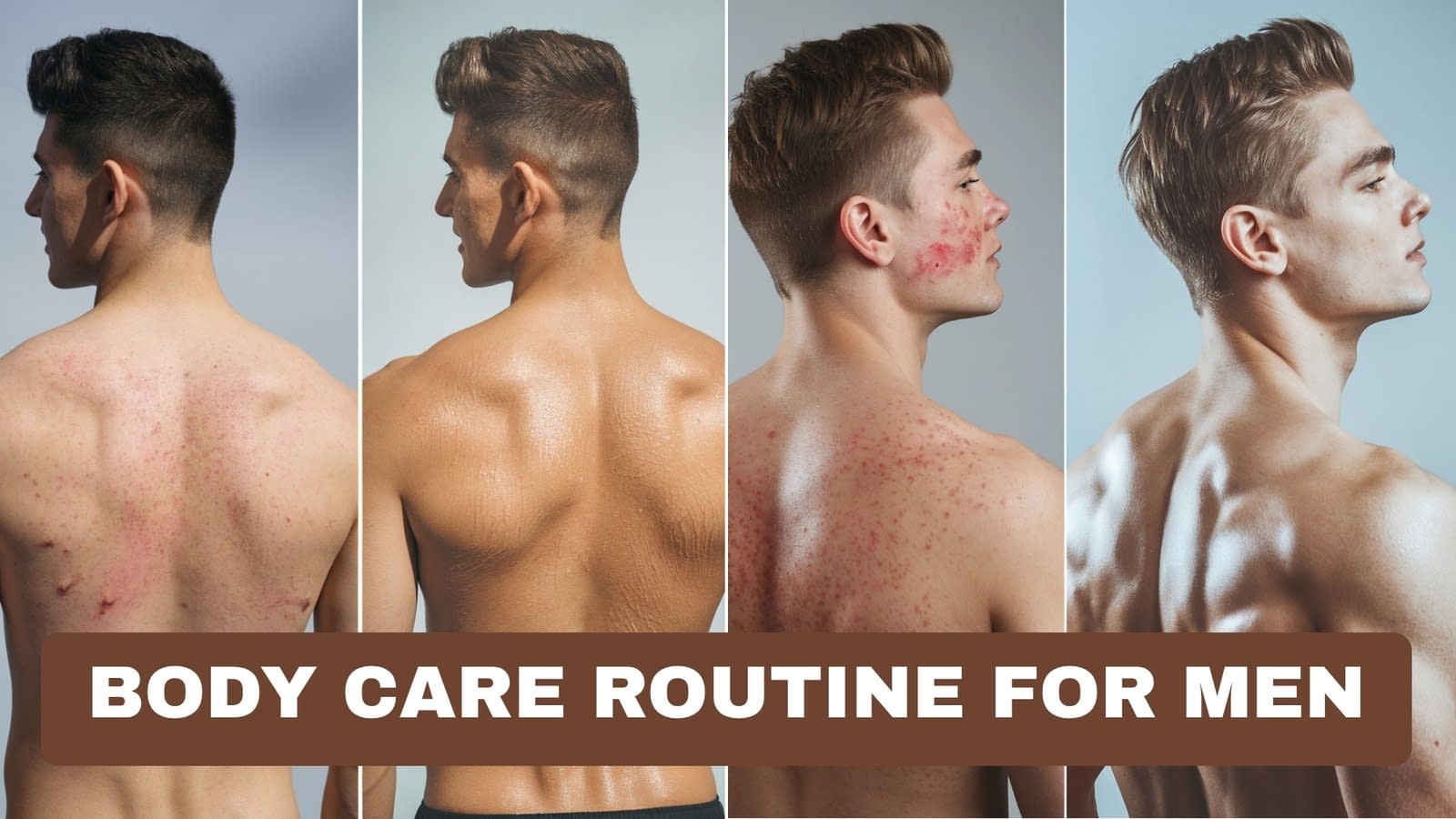Healthy nails are an easy, visible sign of self-care — they make your hands look polished, protect the fingertip, and tell you a lot about personal hygiene and overall wellbeing. The good news: you don’t need expensive salon visits to keep nails strong and beautiful. With a few smart weekly habits, daily mini-routines, and the right foods, you can stop breakage, speed recovery, and enjoy nails that look cared-for every day.
Below is a complete, practical guide: why nail health matters, a step-by-step weekly routine you can follow, detailed how-tos for trimming and filing, cuticle care and strengthening treatments, diet tips, common mistakes to avoid, and a compact weekly checklist you can print or save. Read straight through or hop to the sections you need.
Why Strong, Healthy Nails Matter
Nails do more than look pretty:
- Protection: Nails shield the sensitive tips of our fingers and toes from injury.
- Function: They help with picking up small objects, scratching, and precise tasks.
- Hygiene indicator: Nails trap dirt and pathogens if not cleaned properly — long, neglected nails can harbor bacteria and fungus.
- Appearance & confidence: Well-groomed nails elevate your personal presentation and can make hands look more youthful and cared for.
Because nails grow slowly, the best strategy is prevention: protect the nail plate (the hard part), support the cuticle and underlying skin, and feed your body the nutrients it needs to build keratin. Small weekly rituals plus daily mini-habits add up to long-lasting improvements.
Weekly Nail Care Routine: The Basics
Here’s a simple, repeatable weekly routine (about 20–40 minutes) that gives your nails everything they need: cleanliness, shape, moisture and strengthening time.
Weekly routine — step-by-step (one session per week)
- Remove polish gently (if wearing any) with a non-acetone remover if possible.
- Soak hands 3–5 minutes in warm water or a gentle soak to soften cuticles and clean under nails. Add a few drops of gentle soap or 1 tsp baking soda to the water if nails are dirty.
- Clean under nails with a soft nail brush — don’t dig with sharp tools.
- Trim if needed using sharp nail clippers—cut straight across or leave small corners depending on shape.
- File to refine shape and smooth edges (one direction only).
- Gently push cuticles back after soaking (or use a cuticle remover) — do not force or cut unless you know what you’re doing.
- Buff very lightly if you want smoothness — don’t over-buff (see section 4).
- Apply a strengthening treatment or nail oil; let it sit while you relax.
- Moisturize hands and cuticles with a rich cream and a few drops of cuticle oil; massage to boost circulation.
- Finish with a protective base coat or clear polish if you like, and sunscreen for hands if heading outdoors.
This session is your weekly reset. Complement it with quick mini-routines daily: a drop of cuticle oil at night, hand moisturizer after washing, and gloves for chores.
Keep Nails Clean and Trimmed

Clean, well-trimmed nails are less likely to trap dirt and break. Here’s how to trim and maintain hygiene safely.
Proper trimming technique — step-by-step
- Soak briefly (optional). Trimming after a shower or after the weekly soak softens nails and reduces chipping.
- Use sharp, high-quality clippers — dull clippers can split. Use a separate set for mani/pedi hygiene.
- Trim straight across for fingernails to avoid ingrown nail edges. For toenails, cutting straight across helps prevent ingrown toenails. Trim small amounts — you can always shorten further.
- Round the corners only very slightly with a file if you prefer a softer edge; avoid curving too deeply at the sides.
- Clean under nails with a soft bristled brush and gentle soap. Avoid sharp metal tools which can injure the nail bed.
Hygiene tips
- Wash hands thoroughly after gardening, handling raw meat, or using harsh detergents.
- Keep a soft nail brush near the sink and scrub gently under the nail beds once a week to remove trapped grime.
- If nails are heavily stained (smoking, dye), soak with a baking soda paste (baking soda + water) for 5–10 minutes before brushing. Rinse thoroughly.
Nail Filing 101: Shape and Strength
Filing is more than style — it’s about preventing snags and controlling stress points that cause breaks.
Choose the right file
- Glass or crystal files are gentle and seal the keratin, reducing splitting.
- Medium-grit emery boards (180–240 grit) are fine for natural nails. Save coarse grits for acrylics or thick nails.
- Avoid very rough files on natural nails.
Filing technique — step-by-step
- File in one direction only. Sawing back and forth creates micro-tears and weakens the edge.
- Start at the outside edge and file toward the center with gentle, controlled strokes. Repeat on the other side.
- Don’t over-file the edges — leave a slight thickness (10–15 strokes per side is often enough).
- Choose a shape that suits your nail strength:
- Square — blunt, strong; good for nails that chip vertically.
- Squoval (square oval) — most practical for strength + flattering look.
- Round — natural and practical for short nails.
- Almond/oval — elegant, but longer shapes put more stress on the tip.
- Finish with a gentle buff (one-pass with a fine buffer) if needed to smooth the edge. Don’t buff daily.
How shape affects strength
- Shorter, squoval/round shapes distribute force more evenly and are less likely to break. If you’re growing nails out, keep them slightly rounded to avoid snags.
Moisturize and Protect Your Cuticles

The cuticle seals the space between nail and skin. Healthy cuticles protect the nail matrix (where growth starts) and prevent infection.
Cuticle care step-by-step
- Soften: During your weekly soak or after showering, apply a cuticle remover or simply work with warm soapy water to soften cuticles.
- Gently push back: Use a wooden orangewood stick or a soft rubber pusher — don’t force. Push gently once or twice; over-pushing stresses the matrix.
- Avoid cutting: Cutting live cuticle tissue (cuticle nicks) increases infection risk. If you have hangnails, carefully trim only the torn bit with sanitized cuticle nippers.
- Oil & moisturize: After care, apply a nourishing cuticle oil and massage in. Regular use prevents dryness and cracking.
Recommended oils and creams
- Cuticle oil blends: jojoba oil, sweet almond oil, or vitamin E oil are excellent.
- DIY oil: Mix 1 tbsp jojoba oil + 5 drops vitamin E oil + 3 drops lemon essential oil (optional for shine). Use nightly.
- Creams: thick hand creams containing glycerin, shea butter, ceramides or niacinamide protect the skin and repair barrier.
Daily cuticle oil application is the single best habit to keep nails flexible and prevent splitting at the base.
Strengthening Treatments and Oils
If nails are thin, brittle or peeling, a weekly strengthening routine helps. Use treatments as supplements — not replacements — for hydration and nutrition.
Weekly strengthening session — step-by-step
- Clean and dry: Remove polish and clean nails.
- Light buff (optional): Gently buff only if you have ridges or very uneven surfaces — don’t overdo it.
- Apply treatment: Choose one of the following approaches and apply according to product instructions:
- Nail hardener: apply a strengthening base coat 1–2× a week (avoid prolonged continuous use — give nails breaks).
- Protein treatments: products with keratin or collagen can temporarily add strength; use weekly.
- Bi-weekly oil soak: warm a small bowl of olive or almond oil, add a few drops vitamin E; soak nails 5–10 minutes, massage cuticles.
- Seal with protective topcoat: If you use polish, finish with a protective clear coat to prevent micro-cracking.
- Leave nails polish-free for a few days each week to breathe and absorb oils.
DIY strengthening recipes
- Olive oil + lemon soak (for occasional use): Warm (not hot) olive oil with a few drops of lemon juice, soak 5–8 minutes, then moisturize. Note: lemon can be drying for sensitive skin; use sparingly and test first.
- Coconut oil + vitamin E: Warm small amount, massage into nails and cuticles nightly.
When to use commercial treatments
- Look for treatments with hydrolyzed keratin, calcium, vitamin E, panthenol (pro-vitamin B5) or biotin analogs. These ingredients support surface strength and flexibility. Follow the directions — many are applied like polish and removed regularly.
Nail-Friendly Diet for Long-Lasting Nails
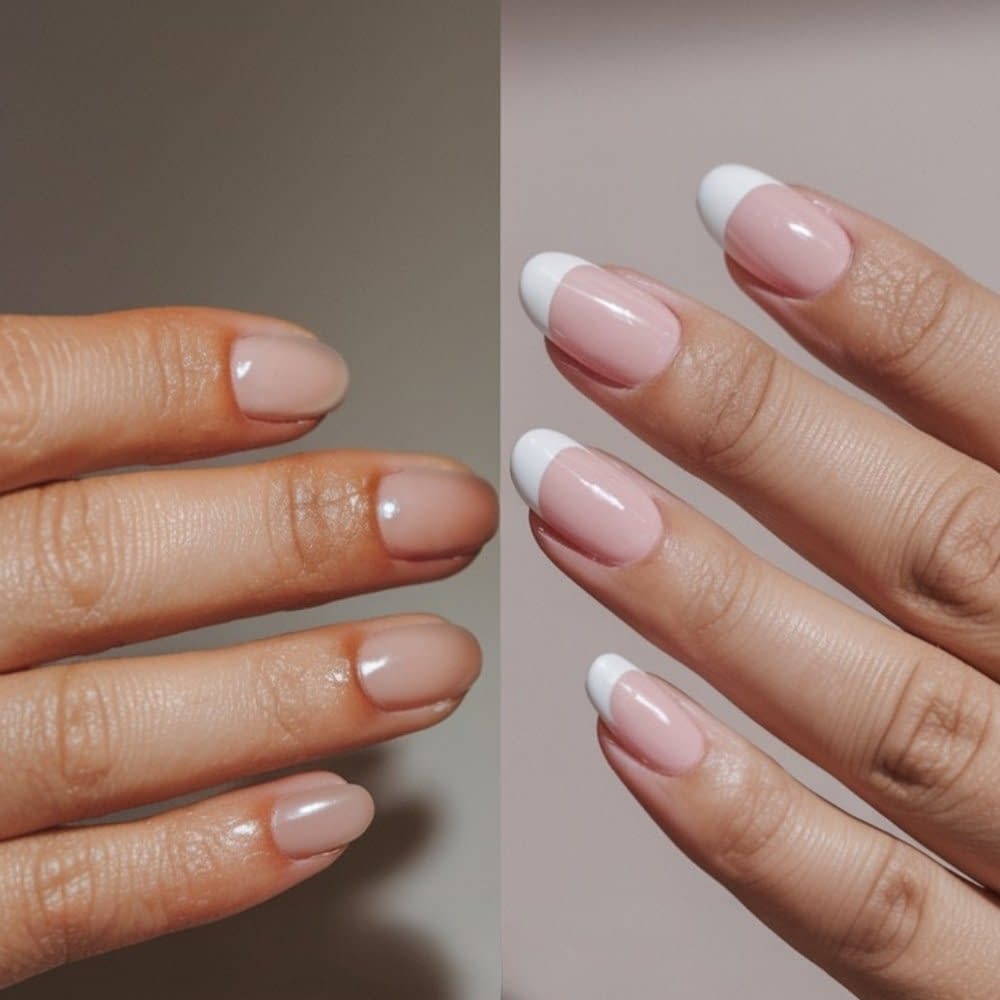
Nails are made of keratin, a protein — what you eat matters. A balanced diet supplies the building blocks for healthy growth.
Key nutrients & foods
- Protein: Nails are proteinaceous. Include lean meats, eggs, dairy, legumes, tofu and tempeh.
- Biotin (B7): Associated with stronger nails in deficiency. Good sources: eggs, nuts (almonds), seeds, sweet potato, oats. (If considering supplements, consult a healthcare provider.)
- Iron: Iron deficiency can cause brittle or spoon-shaped nails. Eat red meat, beans, lentils, spinach, and pair with vitamin C to enhance absorption.
- Zinc: Supports tissue growth — found in meat, shellfish, seeds, and nuts.
- Omega-3 fatty acids: Provide nail hydration from within — fatty fish (salmon, mackerel), flaxseed, chia seeds.
- Vitamin C: Needed for collagen synthesis (structure) — citrus, berries, bell peppers, broccoli.
- Vitamin A & E: Antioxidant support for skin and nail health — carrots, leafy greens, nuts.
Practical weekly meal tips
- Breakfast idea: Oatmeal with chopped almonds and a spoonful of chia seeds + berries.
- Lunch idea: Salmon or chickpea salad with mixed greens and bell peppers.
- Snack: Greek yogurt with fruit or a handful of nuts.
- Hydration: Drink water regularly — dehydration affects nail flexibility.
If you suspect a nutritional deficiency (thin, ridged or spoon-shaped nails), check with your doctor — simple blood tests can identify iron, B12, or other deficiencies.
Avoiding Common Nail Mistakes

Some habits silently sabotage nail health. Here’s how to stop them.
Common mistakes & how to prevent them
- Biting nails / cuticles: Triggers infections and deformities. Replace with a fidget object, bitter nail polish, or mindful habit reversal.
- Using nails as tools: Don’t pry lids or scrape with your nails — use the correct tool instead.
- Over-filing or over-buffing: Weakens the nail plate. Limit buffing to once every 4–6 weeks and file gently one-direction.
- Frequent acrylic or gel use without breaks: Repeated harsh removal (acetone, force) thins nails. Give nails 2–4 weeks “naked” between sets to recover.
- Harsh polish removers: Pure acetone dries nails and skin quickly. Use non-acetone removers when possible and follow with oil.
- Skipping gloves for chores: Detergents & cleaning chemicals strip oils — wear rubber gloves lined with cotton for dishwashing and cleaning.
- Cutting cuticles aggressively: Leads to infections and damaged matrix. Use oil and gentle pushing instead.
Stopping these habits is often the fastest route to better nails.
Protective Tips for Hands and Nails
Protection is prevention. A few daily practices preserve the health you build during weekly care.
Everyday protective tips
- Always wear gloves for wet work (washing dishes, cleaning, gardening). Prefer cotton-lined rubber gloves to trap moisture and avoid sweating.
- Moisturize after washing: Keep a travel-size hand cream near all sinks. Look for glycerin, ceramides, or urea for extra hydration.
- Nighttime barrier treatment: Apply a thick cream and a drop of cuticle oil before bed. Slip on cotton gloves overnight for deep hydration.
- Apply sunscreen to hands: Sun exposure causes brown spots and skin thinning; SPF for hands is an underused anti-aging habit.
- Trim hangnails safely: Use sanitized nippers to remove only the ragged edge; then oil and moisturize.
- Keep nail tools clean: Sanitize clippers, files, and buffers periodically with rubbing alcohol — especially if you visit salons.
- Alternate polish & bare weeks: Allow nails to recover fully 1–2 weeks per month without polish or artificial enhancements.
Weekly Nail Care Checklist
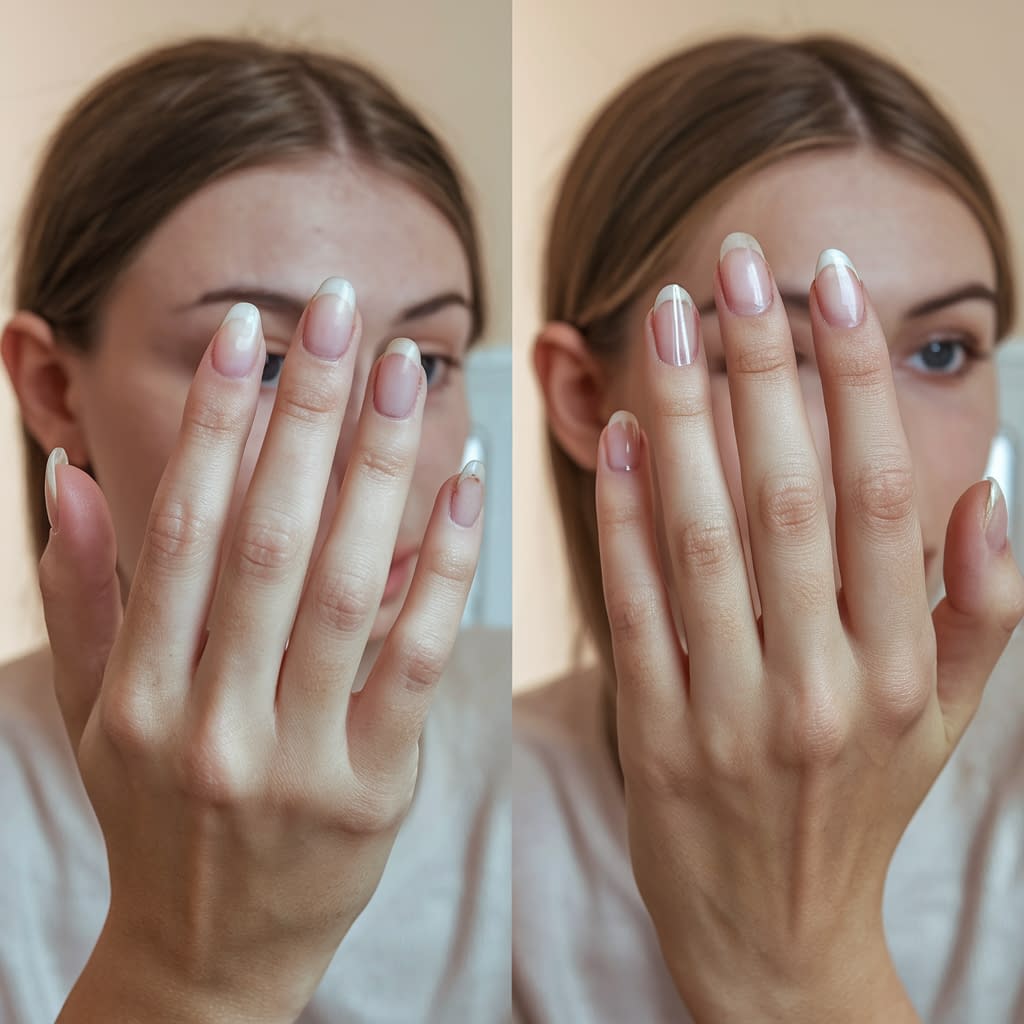
Print or save this checklist and follow it once a week. It takes 20–40 minutes and makes a big cumulative difference.
Weekly Nail Care Checklist
- Remove polish with non-acetone remover (if worn).
- Soak hands 3–5 minutes in warm water (optional gentle soap or baking soda).
- Clean under nails with a soft nail brush; rinse.
- Trim nails straight across (or to preferred length).
- File nails gently in one direction to shape (choose squoval/round for strength).
- Gently push back cuticles; do not cut (trim only hangnails).
- Light buff if needed (no more than once every 4–6 weeks).
- Apply strengthening treatment or oil soak (keratin treatment or warm oil soak).
- Massage cuticle oil into each nail and rub into hands with a rich hand cream.
- Finish with clear protective coat or leave natural; apply sunscreen to hands if going outside.
Daily mini-habits (do these every day)
- Apply cuticle oil nightly.
- Moisturize hands after every wash.
- Wear gloves for household chores.
- Avoid using nails as tools; use proper implements.
Final Words
Strong, healthy nails are not an overnight achievement — they reflect consistent care, good nutrition, and protective habits. A focused weekly ritual plus tiny daily actions (oil, moisturizer, gloves) will prevent most common problems: breakage, splits, and slow growth. Avoid damaging practices (biting, aggressive filing, frequent acrylic removals), eat a balanced diet that supports keratin production, and give your nails short breaks from polish and enhancements.
Start with this week’s checklist, keep a small bottle of cuticle oil on your bedside table, and notice how, in a few weeks, your nails feel stronger, smoother and more reliable. If you ever see unusual changes (sudden discoloration, severe brittleness, pain, or signs of infection), consult a dermatologist or healthcare professional — sometimes nails reflect deeper health issues that need medical attention.


